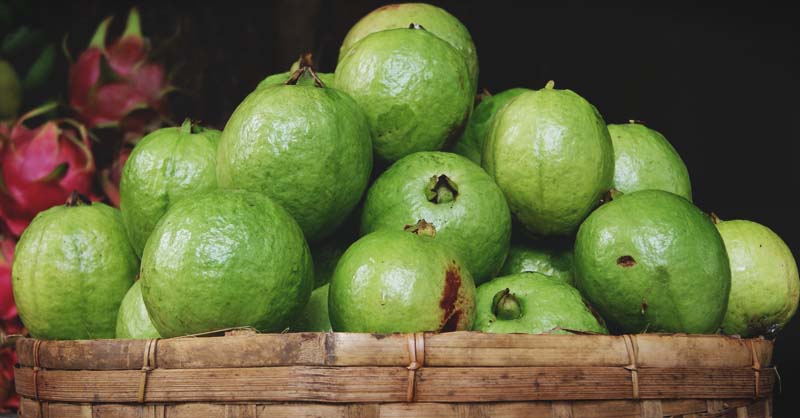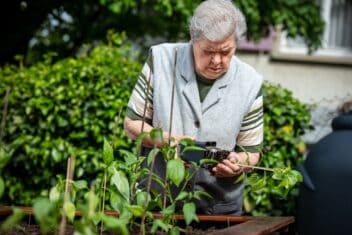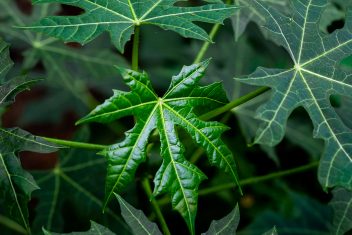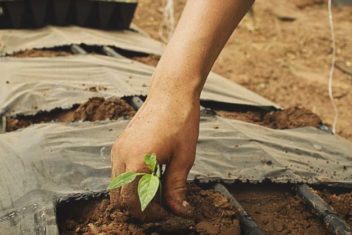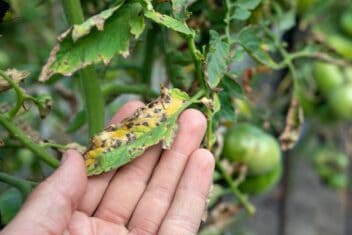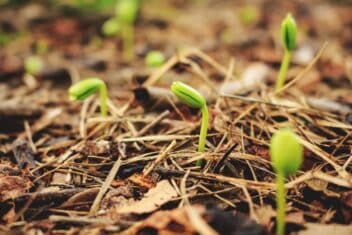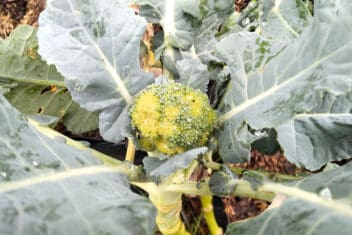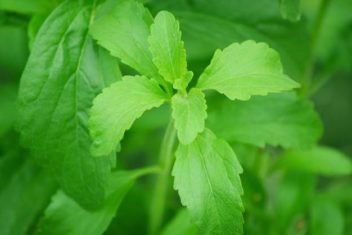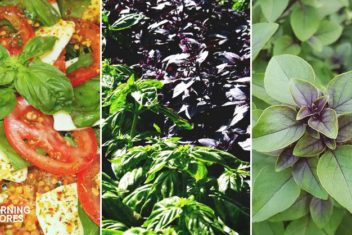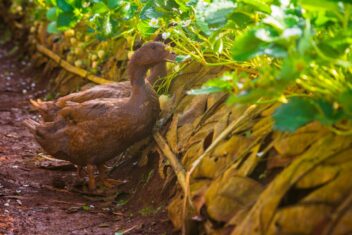When I first tasted fresh guava, I knew I would never eat another canned one again. Since then, I’ve been growing guava in my own garden because the tropical fruit has a fresh, sweet flavor – something like a strawberry combined with a pear – that I can’t get enough of.
If you’re lucky enough to live in an area that is friendly to guava, there are many varieties you can grow, and they all have their own unique taste. They’re lovely in desserts, baking, smoothies, and eaten as fresh treats. They’re relatively low in sugar and high in vitamin C.
To top it off, they’re super easy to grow and, once they become established, they’re prolific fruiters. Give guava a go, and you won’t be disappointed: pretty much all they need is heat and moisture.
Guava is so simple to grow that I’ve found a couple of guava trees growing on my property that have appeared simply because an animal has eaten a fruit from one part of the garden and deposited a seed in another.
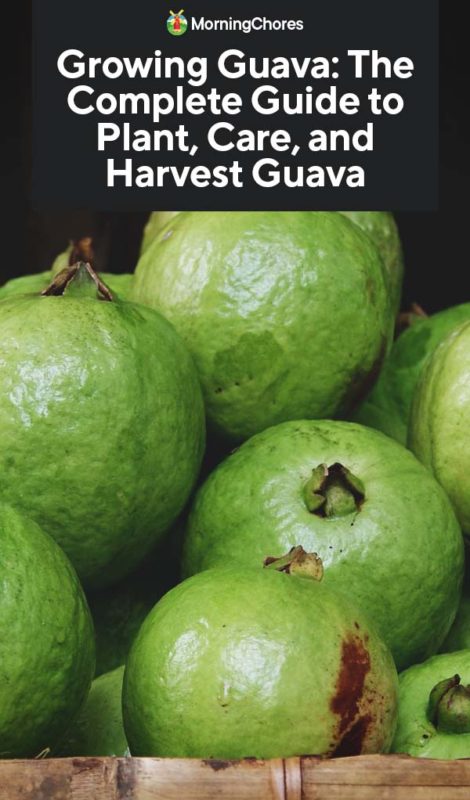
Varieties of Guava

- Apple Guava: This is the most common guava that is eaten fresh. It has lovely white fruit that turns light yellow.
- Strawberry Guava: A tasty guava that has a distinct strawberry flavor. This is an excellent option for eating straight off the tree.
- Tropical Guava: This fruit has yellow skin with tender, white flesh. Tropical has a lovely aroma that reaches across your garden.
- Red Malaysian: This is a beautiful tree with slightly red leaves and red fruit. The flowers are bright pink.
- Mexican Cream: Sometimes called ‘Tropical Yellow,’ this variety has incredibly sweet, tender flesh perfectly suited to desserts. This tree has a more upright form than some other guava trees.
- Lemon Guava: This variety has both yellow skin and yellow flesh with a distinct lemon flavor. It’s a slightly smaller tree, so it’s perfect if your space is limited.
- Pineapple Guava: This type has larger fruit that ripens in late fall. I have espaliered this variety, and it works well.
Planting Guava
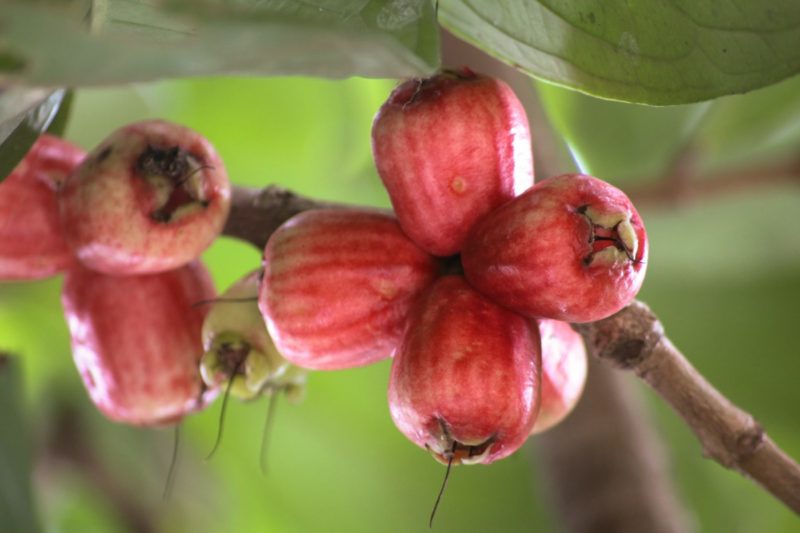
Zones
Guava grow well in zones 8 to 11. Typically, they do best in parts of Hawaii, California, Florida, Texas, Puerto Rico, and the Virgin Islands. You can also grow guava in containers so that you can take them indoors in areas that get too cold. Guava don’t like the cold, and if the tree is young, a hard winter may kill it.
Sun Requirements
Guava need full sun to thrive. If you live in a sweltering area, partial shade is advisable. Make sure your trees get plenty of sunshine.
Soil Requirements
Guava prefer a pH of 4.5-7. They’ll withstand most soil types but definitely do better with a good helping of rich, well-rotted organic matter. Guava likes well-drained soil – they’ll take waterlogged soil for a short time before wilting and dying off.
Guava Seeds
You can plant from seeds, though you’re better off getting seeds from a retailer rather than from a fruit, as the germination rate is low.
Guava seeds have a hard outer layer, so you need to soak the seeds in water for 10 to 15 days before planting in a good quality seed mix in a small pot.
Germination takes anywhere between 3-10 weeks, and temperatures must be around 77°F. Once the plant reaches about 12 inches high, you can transplant outside. Be sure to harden off for a week before putting in the ground.
It will take up to three years for a guava tree to fruit when grown from seed.
Cuttings
Guava can be grown from cuttings. I’ve grown a couple of trees this way and they both flowered and fruited in the second year. Since they weren’t grafted onto a particular rootstock, they got huge.
Grafted Trees
I prefer to purchase a grafted variety from a reputable supplier. This will provide you with a good fruiting variety on vigorous rootstock. If you’re trying to save money and plant on a budget, then grow from seed or cuttings.
Planting in Pots
If you have limited space or don’t want a huge tree, you can try growing guava in containers. Initially, plant them in a pot about 12 inches and each year replant in a slightly bigger container. Use good quality potting mix and make sure your pot has good drainage.
Spacing
If you plant more than one guava tree, give about 15-25 feet of spacing between each one. Most guava trees can grow tall, and some have a wide-reaching growth habit.
Caring for Your Guava
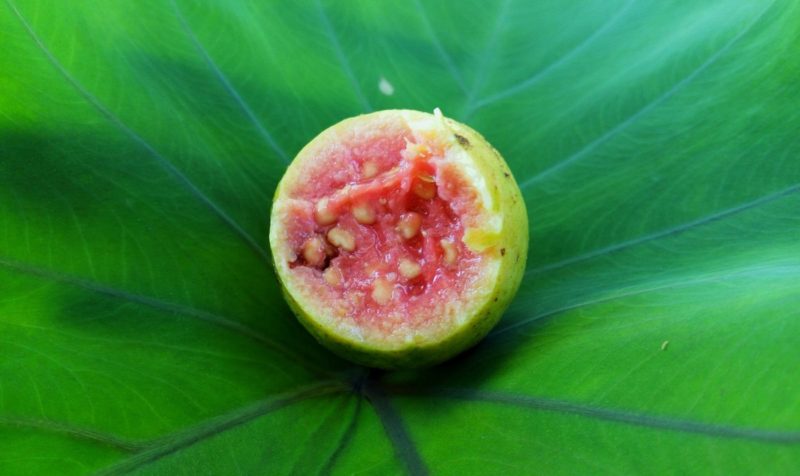
Watering
After planting, water your growing guava trees every other day and then once a week for the first year. Guava appreciate a deep watering but allow the soil to dry before you water again.
Mulching
I mulch my guava with any organic matter I can find. I’ve used leaves, hay, compost, or grass clippings.
Fertilizing
Guava are heavy feeders, so fertilize them once every month or so. Use a well-balanced fertilizer or one with a slightly higher nitrogen reading.
Pruning
I prune my guava hard each year for a couple of reasons. Firstly, I like to keep a nice aesthetic to my trees, so I prune to a wine glass pattern. Secondly, because guava can grow so tall, reaching the little fruits high up in the tree gets tricky, and the birds get more than I do.
Prune your container-planted tree in early summer to keep it compact and for aesthetics.
Companion Plants for Guava
The best companion planting options for guava trees include:
- Citrus trees
- Chives
- Marigold
- Comfrey
- Borage
Worst companions:
- Cucumber
- Eggplant
- Potato
Problems and Solutions to Growing Guava
For all of their hardiness, guava can be affected by several pests and deficiencies.
Fruit Fly
Harvest your fruit a couple of times a week to avoid over-ripening which attracts fruit flies.
Many different types of fruit fly target guava. One species of fruit fly is commonly called the guava fruit fly. They damage the fruit, often making it unappealing in appearance.
The fly lays eggs on the fruit before the larvae tunnels in where it goes through several stages. When the fruit drops to the ground, the fly pupates.
Look for:
- Little puncture wounds on the fruit
- Larvae in the fruit
- Secondary infections that have taken hold because of the puncture wounds
- Adult fruit flies
I found the best way to deter these pests is threefold.
- Use neem oil
- Purchase pheromone traps, which will attract the males so you can interrupt the breeding cycle
- If you have neighbors with fruit trees, get them on board as well. You’ll be amazed how much fruit is saved if you work on these pests in sync with each other.
Guava Moth
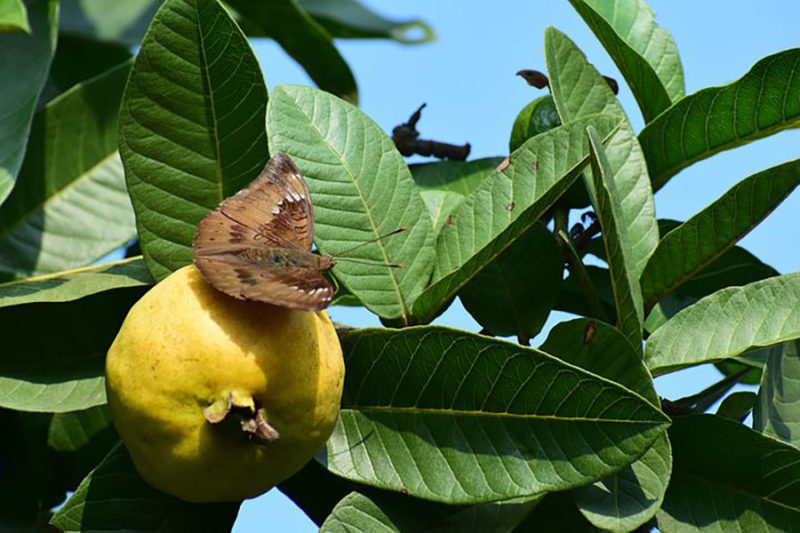
This moth attacks new shoots and is a complete menace to your guava tree. You can set guava moth traps, which is probably the most efficient way to control these bugs.
Other common pests include:
- Aphids
- Ants
- Scale
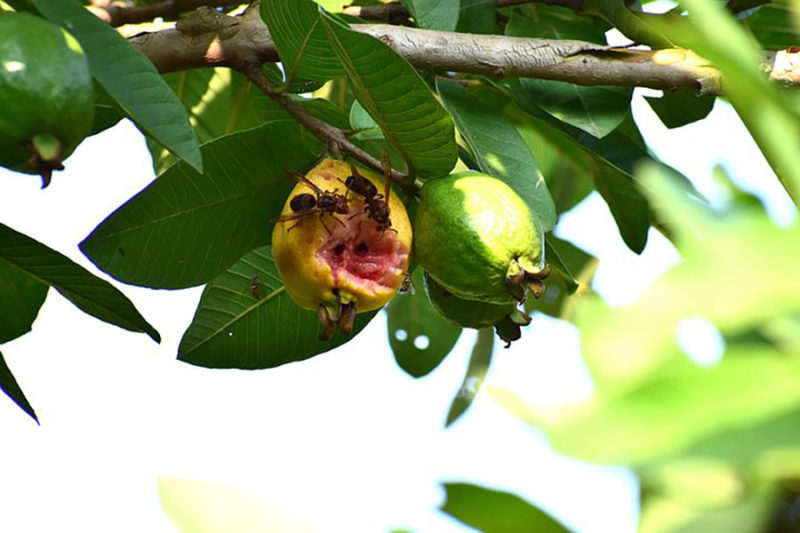
The most efficient method for controlling pests on growing guava trees is to keep the tree as healthy as possible. Keep it well watered, well-fed and give it plenty of sunshine.
Wilt
Wilt can be fatal for plants and often appears in the wet season. It makes the plant look sick, wilted, and yellow. Often the leaves will turn yellow and fall off.
Give your plant a good feed of nitrogen, especially after fruiting, and ensure the roots are well protected from damage.
Stylar End Rot
I had this with my guava, and it caused me to lose the entire season of fruit. I thought it was blossom end rot, but blossom end rot is a fungal infection that can be treated with a fungicidal spray.
With stylar end rot, the bloom end of the fruit discolors and spreads over the rest of the fruit giving a rotting appearance.
Once your individual fruit is infected, it’s a lost cause. Remove it and also remove all dropped foliage. You may need multiple applications of the fungicide.
Anthracnose
This is another fungal disease that spreads quickly easily, particularly through raindrops bouncing from leaf to leaf. Young shoots die off before fruit discolors and gets darker before rotting completely.
Use a fungicide spray regularly.
Harvesting Guava
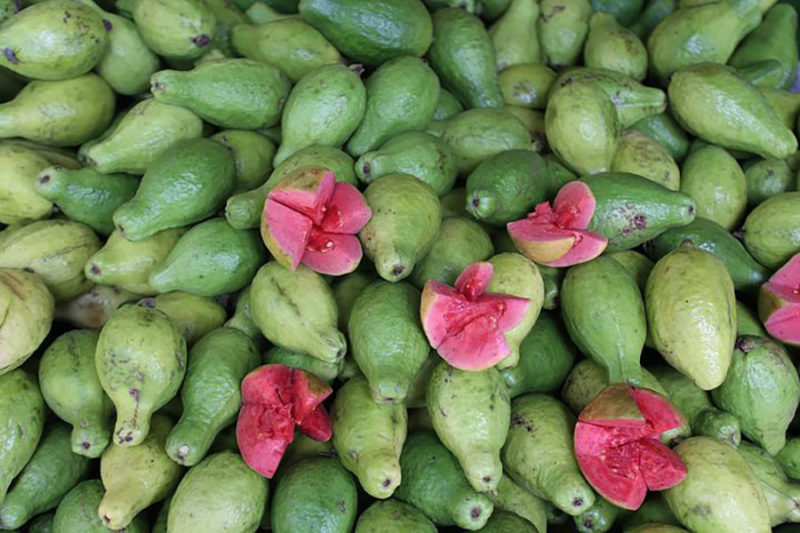
Guava trees are usually ready for harvest within 3-8 years after planting. Get ready, once your tree is fully productive, you can get up to 80 pounds of fruit a year – and in some areas, you can even get two harvests a year.
Guava is usually ready to pick once it changes color. Red guava will turn from green to yellow. White guava turns from deep green to light green. You can also smell your fruits. They should be sweet and musky. Finally, give them a squeeze. Are they firm or do they have a slight give? If it’s the latter, they’re ready to pick.
Timing is key because if you pick guava early, it won’t taste good, and if you wait too long, they become a target for fruit flies.
Guava should be placed on a counter or in a paper bag to ripen further after picking. You can speed things up by putting guava in a bag with a banana or an apple.
Once ripe, you can store guava for a week in the refrigerator. Unripened fruit can store in a cool area for a few weeks.
Eating Guava
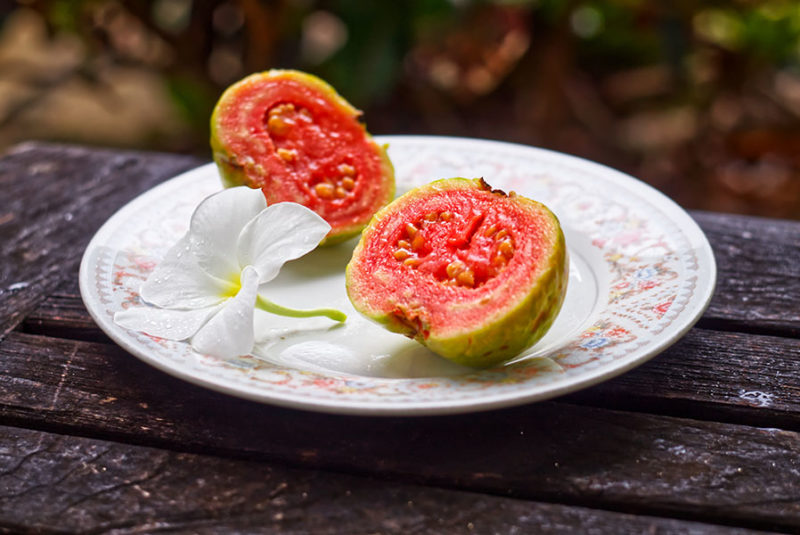
After all that hard work, it’s time to dig in. You can peel and eat guava fresh, but it’s also delicious used in a variety of recipes. Try:
- Homemade Easy Guava Jam
- Tasty Guava “Fudge”
- Guava Pie
- Savory Guava and Pineapple Bread
- Guava Sorbet
- Healthy Guava Oatmeal Bars
- Guava Empanadas
- Tangy Guava Chicken
- Chipotle Glazed Pork With Guava Glaze
If you have any great ideas about growing guava, we’d love to hear them. If you’ve never grown them before, don’t wait. Let us know how it goes!

